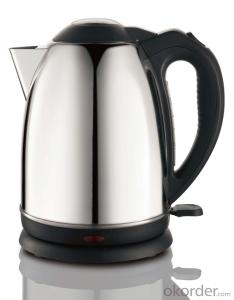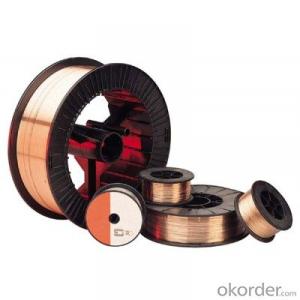1.5 Mm Stainless Steel Rod
1.5 Mm Stainless Steel Rod Related Searches
Best Paint For Stainless Steel Blanket Insulation For Steel Buildings Primer For Galvanized Steel Foam Filter For Stainless Steel H S Code For Stainless Steel Surface Grinding Wheels For Stainless Steel Surface Grinding Wheels For Hardened Steel Hole Saw For Stainless Steel Paint For Stainless Steel Stainless Steel For BbqHot Searches
Steel Mesh Panels For Sale Price For Stainless Steel Scrap Scrap Price For Stainless Steel Price For Stainless Steel Stainless Steel Tank For Sale Stainless Steel Sheets For Sale Cheap High Tea Sets For Sale Stainless Steel Tanks For Sale Stainless Steel For Sale High Density Fiberboard For Sale Solar Hot Water Collectors For Sale Scaffolding For Sale In Uae Scaffolding For Sale In Ireland Scaffolding For Sale In Houston Type Of Inverter For Solar Price Of Shipping Containers For Sale Types Of Inverter For Solar Stock Price For Aluminum Used Solar Inverter For Sale Steel Mesh Panels For Sale1.5 Mm Stainless Steel Rod Supplier & Manufacturer from China
Okorder.com is a professional 1.5 Mm Stainless Steel Rod supplier & manufacturer, offers integrated one-stop services including real-time quoting and online cargo tracking. We are funded by CNBM Group, a Fortune 500 enterprise and the largest 1.5 Mm Stainless Steel Rod firm in China.Hot Products
FAQ
- Stainless steel wire, in general, exhibits resistance to bending and kinking. Its high strength and durability distinguish stainless steel from other materials by reducing its susceptibility to bending or kinking. The inclusion of chromium and nickel in the alloy composition of stainless steel enhances its ability to resist corrosion and mechanical stress. Consequently, stainless steel wire is widely preferred in various industries such as construction, automotive, and electrical, where the wire's performance and longevity rely on its ability to withstand bending and kinking. Nevertheless, it is crucial to acknowledge that stainless steel wire can still bend or kink under extreme or excessive force. Hence, proper handling and application should always be considered.
- Indeed, springs in the electronics industry can make use of stainless steel wire. The outstanding corrosion resistance, impressive strength, and commendable elasticity of stainless steel make it a favored option for springs. These characteristics render stainless steel wire suitable for a multitude of applications in the electronics sector, encompassing connectors, switches, relays, and other electronic components that necessitate dependable and long-lasting springs. Moreover, stainless steel springs exhibit the ability to endure high temperatures and possess commendable electrical conductivity, thereby making them an optimal choice for incorporation in electronic devices.
- Stainless steel wire is well-known for its exceptional performance in high-stress environments, thanks to its unique composition. With a high percentage of chromium, the wire possesses remarkable corrosion resistance, even in harsh conditions. This resistance guarantees that the wire maintains its structural integrity and strength, even when subjected to immense stress. In high-stress environments, stainless steel wire demonstrates outstanding tensile strength and durability, making it the preferred choice for various applications. Its ability to withstand heavy loads and extreme temperatures makes it ideal for use in industries such as aerospace, automotive, and construction. Whether used for suspension cables, springs, or structural supports, stainless steel wire consistently performs under intense pressure. Moreover, stainless steel wire exhibits high resistance to fatigue, which is crucial in high-stress environments. This means that even with repeated loading and unloading, the wire does not succumb to fatigue failure. Its resilience and ability to maintain its shape and function over time make it a reliable option for critical applications where safety is paramount. Another advantage of stainless steel wire is its resistance to deformation and stretching. Even under substantial stress, the wire retains its shape, ensuring consistent performance. This property is particularly valuable in applications where dimensional stability is crucial, such as in medical devices or precision machinery. In summary, stainless steel wire excels in high-stress environments due to its corrosion resistance, exceptional tensile strength, and resistance to fatigue and deformation. These properties make it a dependable choice for industries where reliability and performance are of utmost importance.
- The main characteristics of stainless steel wire include its high resistance to corrosion, strength, durability, and versatility. It is known for its ability to withstand extreme temperatures and harsh environments, making it suitable for a wide range of applications such as electrical wiring, construction, and manufacturing industries. Additionally, stainless steel wire is non-reactive to most chemicals, has a clean and polished appearance, and can be easily formed and manipulated.
- Yes, stainless steel wire can be used for pet enclosures. Stainless steel is a strong and durable material that can withstand the elements and resist corrosion, making it suitable for outdoor use. It is also a safe option for pet enclosures as it does not pose a risk of injury or toxicity to animals. Additionally, stainless steel wire is often used in pet enclosures because it is difficult for pets to chew through, ensuring their safety and containment.
- The different types of stainless steel wire weaves include plain weave, twill weave, Dutch weave, and reverse Dutch weave.
- Yes, stainless steel wire can be used for woven wire cloth. Stainless steel wire is commonly used in the production of woven wire cloth due to its durability, resistance to corrosion, and high tensile strength. It is an ideal material for applications that require a strong and long-lasting wire cloth, such as filtration, sieving, and separation processes. Stainless steel wire can be woven into various mesh sizes and patterns to suit specific requirements, making it a versatile choice for many industrial and commercial applications.
- Indeed, stainless steel wire exhibits resistance against abrasion. Possessing remarkable durability and strength, stainless steel emerges as a formidable material, effectively combating wear and tear. Its distinctive constitution, comprising chromium and nickel, endows stainless steel with exceptional resistance to corrosion and bolstered strength. Consequently, stainless steel wire boasts a remarkable ability to withstand abrasion induced by friction, rubbing, or scraping against diverse surfaces. Given its invaluable resistance to abrasion, stainless steel wire finds extensive employment in fencing, construction, automotive, and marine sectors. It is indispensable in enduring harsh conditions and extending the wire's lifespan.













































